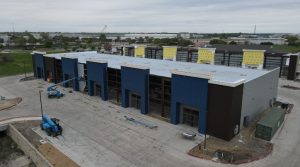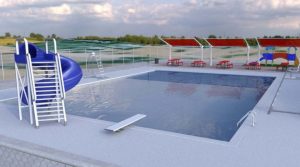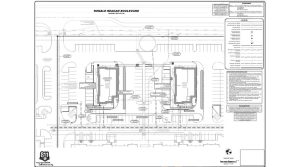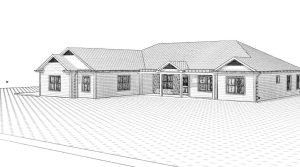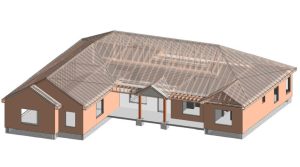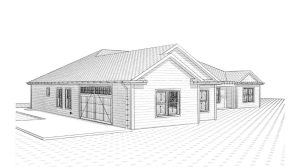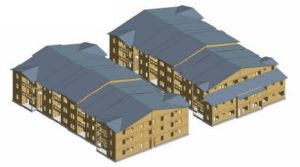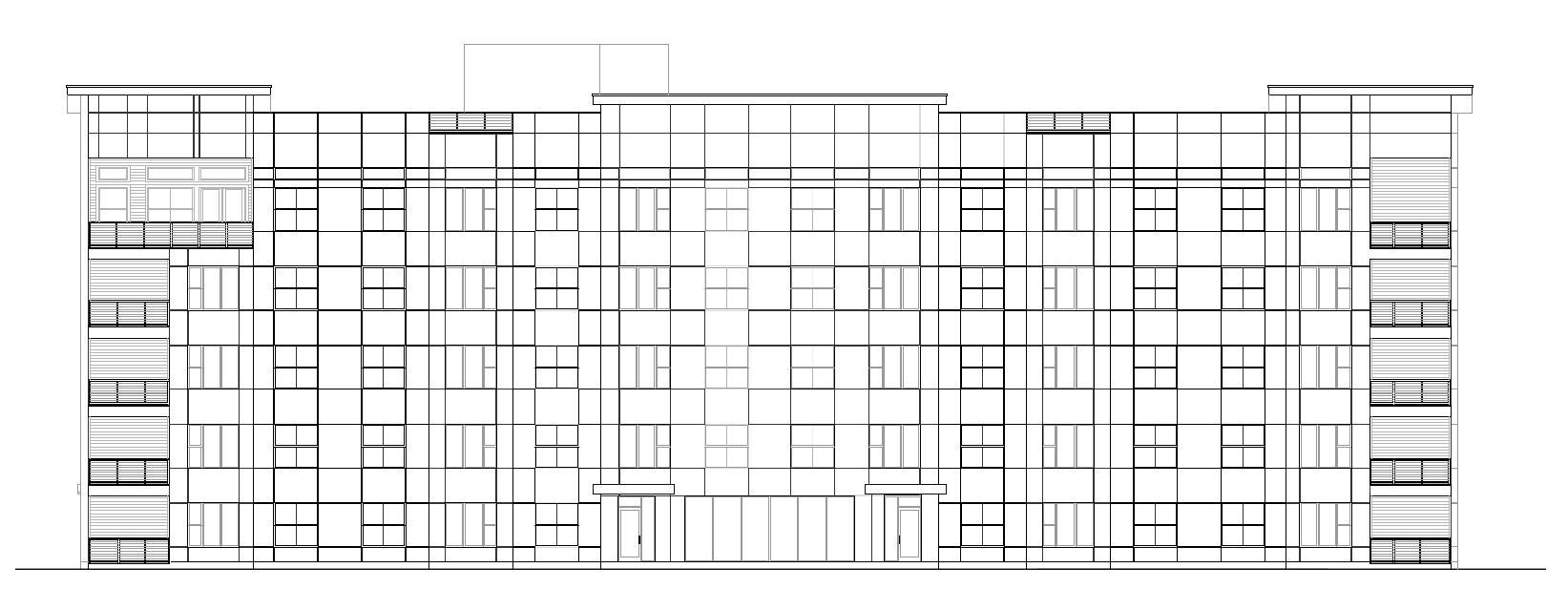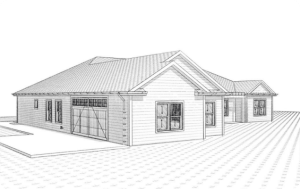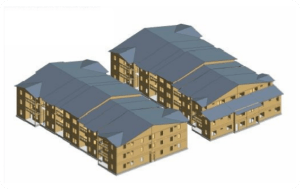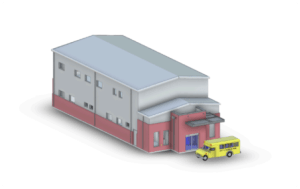Building the Future Key Principles of Structural Engineering in Design
Structural engineers are the backbone of modern construction. They are responsible for designing buildings and other structures that are both safe and aesthetically pleasing. Whether you’re building a new home or renovating an existing one, understanding the principles of structural engineering is crucial to ensuring that your project is a success. In this post, we will explore the key principles of structural engineering in design and how they can be applied to your own construction projects. From understanding load distribution to choosing the right materials, we will provide you with the knowledge you need to build a solid foundation for the future. So whether you’re an architect, a builder, or simply interested in learning more about the construction process, read on to discover the key principles of structural engineering.
1. Introduction: The role of structural engineering in design
Introduction: The Role of Structural Engineering in Design
When it comes to designing structures that are not only aesthetically pleasing but also safe and structurally sound, the role of structural engineering cannot be overstated. Structural engineering forms the backbone of any architectural project, ensuring that buildings, bridges, and other structures can withstand various forces and loads while maintaining their integrity.
Structural engineers are responsible for analyzing, designing, and overseeing the construction of structures, ensuring that they can withstand the forces they will be subjected to throughout their lifespan. These forces include gravity, wind, earthquakes, and even human occupancy. By incorporating principles of physics, mathematics, and materials science, structural engineers create designs that strike a delicate balance between form and function.
One of the key objectives of structural engineering is to ensure the safety of occupants and users of the structure. This involves assessing the potential risks and vulnerabilities of a design and implementing measures to mitigate them. From calculating load capacities to determining the appropriate choice of materials, structural engineers play a critical role in ensuring the stability and resilience of a structure.
In addition to safety, structural engineering also takes into account factors such as sustainability and cost-effectiveness. By optimizing the use of materials and minimizing waste, structural engineers contribute to environmentally-friendly construction practices. They also strive to find innovative solutions that maximize efficiency and minimize construction time and costs, without compromising on quality.
The field of structural engineering has evolved significantly over the years, with advancements in technology and materials allowing for more complex and innovative designs. From iconic skyscrapers to intricate bridges, structural engineers are at the forefront of pushing the boundaries of what is possible in architectural design.
In this blog post, we will explore the key principles of structural engineering that underpin the design of modern structures. We will delve into topics such as load analysis, structural systems, material selection, and sustainability, providing insights into how these principles shape the built environment and contribute to the creation of a better future.
So, join us on this journey as we uncover the fascinating world of structural engineering and discover how it plays a pivotal role in building the future.
2. Understanding the basic principles of structural engineering
Understanding the basic principles of structural engineering is essential for any designer or architect looking to build the future. Structural engineering forms the backbone of any construction project, ensuring that buildings and structures are safe, stable, and able to withstand various loads and forces.
One fundamental principle of structural engineering is the concept of equilibrium. This principle states that for a structure to be stable, the sum of all the forces acting on it must be zero. Engineers carefully analyze and calculate the distribution of loads, such as gravity, wind, and seismic forces, to ensure that the structure remains in equilibrium and can support its intended use.
Another crucial principle is structural analysis. This involves evaluating the internal forces and stresses within a structure to determine its stability and strength. By applying mathematical equations and computer simulations, engineers can predict how a structure will behave under different conditions and make necessary design adjustments to ensure its integrity.
Material properties and behavior are also key considerations in structural engineering. Different materials, such as steel, concrete, and timber, have distinct characteristics and strengths. Engineers must select appropriate materials based on the specific requirements of the project and consider how they will perform over time, accounting for factors like durability, creep, and fatigue.
Furthermore, structural engineers must take into account factors like structural redundancy, load paths, and safety margins. Redundancy refers to the inclusion of extra elements or systems in a structure to provide backup and increase overall safety. Load paths involve determining how forces will be transferred through the structure to the foundation, ensuring that they are distributed effectively. Safety margins are incorporated to account for uncertainties and unexpected conditions, ensuring that structures have a sufficient factor of safety to withstand unforeseen events.
By understanding and applying these fundamental principles, structural engineers can design buildings and structures that not only meet aesthetic and functional requirements but also prioritize safety and durability. Through their expertise, they play a vital role in shaping the future of architecture and construction, creating structures that stand the test of time while pushing the boundaries of innovation.
3. Principle 1: Load-bearing capacity and structural stability
Principle 1: Load-bearing capacity and structural stability
When it comes to structural engineering, the first and foremost principle that must be considered is the load-bearing capacity and structural stability of a building or structure. This principle forms the foundation for all design decisions and ensures the safety and longevity of the structure.
Load-bearing capacity refers to the ability of a structure to carry and distribute the loads placed upon it. These loads can be static, such as the weight of the building materials and contents, or dynamic, such as wind, snow, or seismic forces. Understanding the magnitude and nature of these loads is essential in determining the appropriate design and materials required to withstand them.
Structural stability, on the other hand, refers to the ability of a structure to maintain its integrity and resist deformation or collapse under the applied loads. It involves analyzing the forces acting on the structure and designing elements that can effectively resist those forces. The goal is to ensure that the structure remains stable and does not experience excessive deflections or failure.
In order to achieve load-bearing capacity and structural stability, structural engineers employ a range of techniques and considerations. These include selecting appropriate structural systems, such as beams, columns, and trusses, and determining their sizes and configurations based on the anticipated loads. Factors such as the material properties, geometry, and connections between structural elements are carefully analyzed to ensure optimal performance.
Furthermore, advanced computer modeling and analysis techniques are often utilized to simulate the behavior of the structure under different loading scenarios. This allows engineers to assess the structural response, identify potential weaknesses, and make necessary adjustments to enhance the load-bearing capacity and stability.
Ultimately, the principle of load-bearing capacity and structural stability sets the groundwork for a successful and resilient structure. By prioritizing the safety and integrity of the design, structural engineers can ensure that buildings and structures can withstand the forces they will encounter throughout their lifespan, contributing to a sustainable and secure built environment.
4. Principle 2: Material selection and structural integrity
When it comes to designing structures that will stand the test of time, material selection and ensuring structural integrity are crucial principles in the field of structural engineering. The choice of materials plays a vital role in determining the overall strength and durability of a structure.
Structural engineers carefully evaluate various materials and their properties to determine which ones are best suited for a particular project. Factors such as load-bearing capacity, resistance to environmental factors, and cost-effectiveness are taken into consideration during the material selection process.
Additionally, ensuring the structural integrity of a design is paramount. Structural engineers meticulously analyze the forces and loads that a structure will be subjected to throughout its lifespan. This includes considering factors such as gravity, wind, seismic activity, and even potential human-induced forces.
By understanding these forces and their potential impact on the structure, engineers can design robust systems that can withstand the expected loads. This involves employing mathematical models, computer simulations, and physical testing to validate the structural integrity of the design.
Furthermore, safety considerations are paramount in structural engineering. Engineers must adhere to strict building codes, regulations, and industry standards to ensure that the structure can safely support its intended use and occupancy load.
In summary, material selection and ensuring structural integrity are key principles in the field of structural engineering. By carefully selecting appropriate materials and designing structures that can withstand the expected forces, engineers can create safe, durable, and reliable structures that contribute to the building of a sustainable future.
5. Principle 3: Structural efficiency and optimization
When it comes to designing structures, achieving structural efficiency and optimization is a crucial principle that every structural engineer must adhere to. The goal is to create designs that maximize strength, stability, and durability while minimizing material usage and construction costs.
Structural efficiency involves finding the most effective and economical way to distribute loads and forces within a structure. It requires careful analysis and consideration of various factors, such as the types and magnitudes of loads the structure will be subjected to, the materials used, and the available construction techniques.
One key aspect of achieving structural efficiency is through the selection of appropriate structural systems. Different types of structures, such as beams, columns, trusses, and frames, have distinct load-bearing capabilities and behaviors. By carefully choosing the most suitable system for a particular project, engineers can ensure that the structure efficiently withstands the applied loads without unnecessary excesses.
Furthermore, optimization techniques play a crucial role in achieving structural efficiency. Advanced computer modeling and analysis tools allow engineers to simulate and evaluate different design options, identifying the most efficient solutions. By iterating and refining the design through optimization, engineers can minimize material usage, reduce costs, and improve overall structural performance.
Structural efficiency and optimization also consider sustainability and environmental impact. By utilizing eco-friendly materials, incorporating renewable energy systems, and implementing design strategies that reduce energy consumption, engineers can contribute to a more sustainable future.
In conclusion, structural efficiency and optimization are key principles in the field of structural engineering. By carefully considering load distribution, selecting appropriate structural systems, utilizing optimization techniques, and promoting sustainability, engineers can create structures that are not only safe and durable but also cost-effective and environmentally friendly.
6. Principle 4: Consideration of environmental factors and sustainability
In today’s world, where environmental consciousness is on the rise, it is crucial for structural engineers to incorporate sustainable practices into their designs. Principle 4 of structural engineering emphasizes the consideration of environmental factors and sustainability.
Structural engineers play a pivotal role in creating buildings and structures that are not only safe and durable but also environmentally friendly. They are tasked with finding innovative solutions to minimize the negative impact on the environment throughout the entire lifecycle of a structure.
One key aspect of this principle is the use of sustainable materials. Structural engineers must carefully choose materials that have a minimal environmental footprint, such as recycled or locally sourced materials. By opting for sustainable materials, they can reduce the extraction of natural resources and minimize waste generation.
Additionally, structural engineers must consider energy efficiency in their designs. This involves integrating passive design techniques, such as optimizing natural lighting and ventilation, to reduce the reliance on artificial lighting and mechanical ventilation systems. By reducing energy consumption, not only do they contribute to a greener future, but they also help clients save on operating costs.
Furthermore, water efficiency is another crucial consideration. Structural engineers should aim to incorporate water-saving mechanisms into their designs, such as rainwater harvesting systems or efficient plumbing fixtures. These strategies contribute to reducing water consumption and promoting responsible water management.
Lastly, structural engineers must evaluate the long-term impact of a structure on the surrounding ecosystem. They should consider the site’s biodiversity and strive to mitigate any negative effects on the environment. This could involve preserving existing vegetation, creating green spaces, or implementing measures to prevent soil erosion.
In conclusion, structural engineers have a responsibility to design buildings and structures that prioritize environmental factors and sustainability. By incorporating sustainable materials, promoting energy and water efficiency, and considering the impact on the ecosystem, they contribute to building a greener future. Through their expertise and commitment to sustainable practices, they play a vital role in shaping a more environmentally conscious world.
7. Principle 5: Collaboration with architects and other design professionals
Collaboration is a fundamental principle in the field of structural engineering. When it comes to designing innovative and sustainable structures, the collaboration between structural engineers, architects, and other design professionals plays a crucial role in achieving successful outcomes.
Architects are responsible for creating the overall vision and aesthetics of a building, while structural engineers ensure that the design is structurally sound, safe, and meets all building codes and regulations. By working together from the early stages of a project, these professionals can integrate their expertise and ideas, resulting in a harmonious blend of form and function.
During the collaborative process, structural engineers provide valuable input to architects regarding the feasibility of their design concepts. By taking into account factors such as load-bearing capacities, material strengths, and structural stability, engineers can suggest modifications or alternatives that enhance the overall design while maintaining its structural integrity.
Furthermore, collaboration enables design professionals to explore innovative solutions and push the boundaries of what is possible. By pooling their knowledge and expertise, architects and structural engineers can develop groundbreaking designs that are both visually stunning and structurally efficient.
Effective communication is key in collaborative efforts. Regular meetings, brainstorming sessions, and open dialogue between architects and structural engineers allow for the exchange of ideas, clarification of requirements, and resolution of any design conflicts or challenges that may arise. This collaborative mindset fosters a creative and dynamic environment where the best ideas can flourish.
Ultimately, the success of a project relies on the seamless collaboration between architects, structural engineers, and other design professionals. By harnessing the collective expertise and creativity of these individuals, the future of structural engineering in design is built upon a strong foundation of collaboration, resulting in innovative, safe, and sustainable structures that shape our cities and communities for generations to come.
8. Case study: Innovative structural design in iconic buildings
Case Study: Innovative Structural Design in Iconic Buildings
In the realm of structural engineering, there are certain projects that push the boundaries of innovation and leave an indelible mark on architectural history. These iconic buildings not only capture our imagination but also serve as testaments to the remarkable capabilities of structural design.
One such example is the Burj Khalifa in Dubai, currently the tallest building in the world. Standing at a staggering height of 828 meters, this architectural marvel required groundbreaking engineering techniques to ensure its stability and structural integrity. The design team employed a bundled tube system, consisting of a series of interconnected tubes, to distribute the building’s weight evenly and withstand the forces of wind and seismic activity. This innovative approach not only allowed for the creation of an unprecedented height but also resulted in an aesthetically pleasing and iconic silhouette.
Another notable case study is the Sydney Opera House in Australia. Renowned for its distinctive sail-like roof structure, this architectural masterpiece posed unique challenges in terms of structural design. The design team, led by engineer Ove Arup, utilized a revolutionary approach called the “spherical solution.” This involved the use of precast concrete ribs, interconnected to form a spherical shape, which provided both structural support and flexibility to accommodate the complex geometrical requirements of the building. The result was an iconic landmark that seamlessly integrated engineering and artistry.
These case studies exemplify the key principles of structural engineering in design: innovation, collaboration, and pushing the boundaries of what is possible. By harnessing cutting-edge technologies, embracing interdisciplinary collaboration, and thinking outside the box, structural engineers can create architectural marvels that stand the test of time.
In conclusion, the field of structural engineering plays a vital role in shaping the future of architecture. Through innovative design solutions and the application of key principles, engineers can transform visionary ideas into awe-inspiring structures that captivate the world. The case studies of the Burj Khalifa and Sydney Opera House serve as reminders of the immense potential and limitless possibilities that lie within the realm of structural engineering.
9. Incorporating advanced technologies in structural engineering
As technology continues to advance at a rapid pace, the field of structural engineering is no exception. Incorporating advanced technologies in the design process has become crucial for creating innovative and sustainable structures that can withstand the challenges of the future.
One of the key technologies revolutionizing the field is Building Information Modeling (BIM). BIM allows structural engineers to create detailed 3D models of buildings, enabling a more holistic and collaborative approach to design. With BIM, engineers can analyze the structural integrity of a building, simulate its behavior under different loads and environmental conditions, and identify potential issues before construction even begins. This not only saves time and cost but also enhances the overall safety and performance of the structure.
Another emerging technology making a significant impact is the use of drones in structural inspections. Drones equipped with high-resolution cameras and sensors can efficiently inspect large and complex structures, such as bridges and high-rise buildings, for any signs of damage or deterioration. This eliminates the need for manual inspections, which can be time-consuming and potentially risky for engineers. By capturing accurate and real-time data, drones enable proactive maintenance and early detection of structural issues, ensuring the longevity and safety of the built environment.
Furthermore, the integration of artificial intelligence (AI) and machine learning in structural engineering has opened up new possibilities for optimizing designs and improving structural performance. AI algorithms can analyze vast amounts of data to identify patterns, optimize structural configurations, and predict the behavior of materials under different conditions. This enables engineers to create more efficient and resilient structures, minimizing material waste and maximizing structural integrity.
Incorporating advanced technologies in structural engineering not only enhances the design process but also contributes to sustainable and resilient infrastructure. By leveraging these technologies, structural engineers are able to push the boundaries of innovation, shape the future of architecture, and create structures that are not only visually stunning but also safe, durable, and environmentally friendly.
10. Challenges and future trends in structural engineering design
As structural engineering continues to evolve, new challenges and future trends are emerging that will shape the way we design and construct buildings and structures. These challenges arise from a variety of factors, including changing environmental conditions, advancements in technology, and the need for sustainable and resilient infrastructure.
One of the key challenges in structural engineering design is addressing the effects of climate change. Rising sea levels, extreme weather events, and increased seismic activity require engineers to consider the long-term resilience of structures. This includes designing buildings to withstand stronger winds, heavier rainfall, and potential flooding. Additionally, incorporating sustainable materials and energy-efficient design principles into structural systems is becoming increasingly important to reduce the carbon footprint of buildings and minimize their impact on the environment.
Another challenge is the rapid advancement of technology and its integration into structural design. Building information modeling (BIM) has revolutionized the way engineers and architects collaborate, allowing for more efficient and accurate design processes. With the advent of artificial intelligence and machine learning, engineers can leverage data-driven insights to optimize structural systems, predict performance, and streamline construction processes.
In terms of future trends, the concept of smart structures is gaining traction. Smart structures utilize sensors and embedded technology to monitor and adapt to changing conditions, enhancing their performance and safety. For example, sensors can detect structural damage or strain in real-time, enabling proactive maintenance and preventing catastrophic failures. The integration of smart technologies also allows for the implementation of adaptive structures that can dynamically respond to environmental loads, such as wind or earthquakes.
Furthermore, the use of innovative materials is reshaping the field of structural engineering. From engineered timber to carbon fiber composites, these materials offer improved strength-to-weight ratios, increased flexibility in design, and reduced environmental impact. The incorporation of these sustainable and high-performance materials into structural systems presents exciting opportunities for architects and engineers to push the boundaries of design and create structures that are both visually stunning and structurally efficient.
In conclusion, the challenges and future trends in structural engineering design are driving innovation and pushing the boundaries of what is possible in the construction industry. By addressing climate change, leveraging technology, and embracing sustainable practices, structural engineers play a crucial role in building a future that is resilient, efficient, and environmentally conscious.
11. Conclusion: The impact of structural engineering on the future of design
In conclusion, it is undeniable that structural engineering plays a pivotal role in shaping the future of design. With its focus on innovation, sustainability, and functionality, this field has the power to transform the way we build and interact with our built environment.
Structural engineering not only ensures the safety and stability of structures but also pushes the boundaries of what is possible. From the iconic skyscrapers that pierce the sky to the intricate bridges that connect communities, structural engineering has continuously pushed the limits of what we can achieve.
One of the key principles of structural engineering is the integration of sustainable design practices. As we face the challenges of climate change and limited resources, it is crucial to design structures that minimize their environmental impact. Structural engineers are at the forefront of developing innovative solutions to reduce carbon emissions, optimize energy efficiency, and incorporate renewable materials into construction projects.
Moreover, structural engineering also embraces advancements in technology. The integration of Building Information Modeling (BIM), artificial intelligence, and advanced simulation tools has revolutionized the design process. These tools enable engineers to analyze complex structural systems, optimize material usage, and identify potential issues before construction begins. This not only improves the efficiency of the design process but also enhances the overall quality and durability of structures.
Additionally, the future of design lies in the creation of resilient and adaptable structures. Structural engineers are increasingly focused on designing buildings and infrastructure that can withstand natural disasters, such as earthquakes and hurricanes. By implementing innovative structural systems and materials, engineers can create resilient structures that protect lives and property during extreme events.
In conclusion, the impact of structural engineering on the future of design cannot be overstated. Through sustainable practices, technological advancements, and a commitment to resilience, structural engineering will continue to shape our built environment in ways that are safe, efficient, and environmentally conscious. As we look towards the future, it is essential to recognize the crucial role that structural engineers play in building a better and more sustainable world.
In conclusion, we have explored the key principles of structural engineering in design and how they shape the future of architecture and construction. By understanding the importance of load-bearing structures, material selection, and the integration of innovative technologies, we can create buildings that are not only aesthetically pleasing but also safe and sustainable. The principles discussed in this blog post are fundamental to the field of structural engineering and serve as a guide for architects, engineers, and designers to create structures that stand the test of time. As we continue to push the boundaries of design and construction, let us remember the significance of these principles and their role in building a better and more resilient future.



